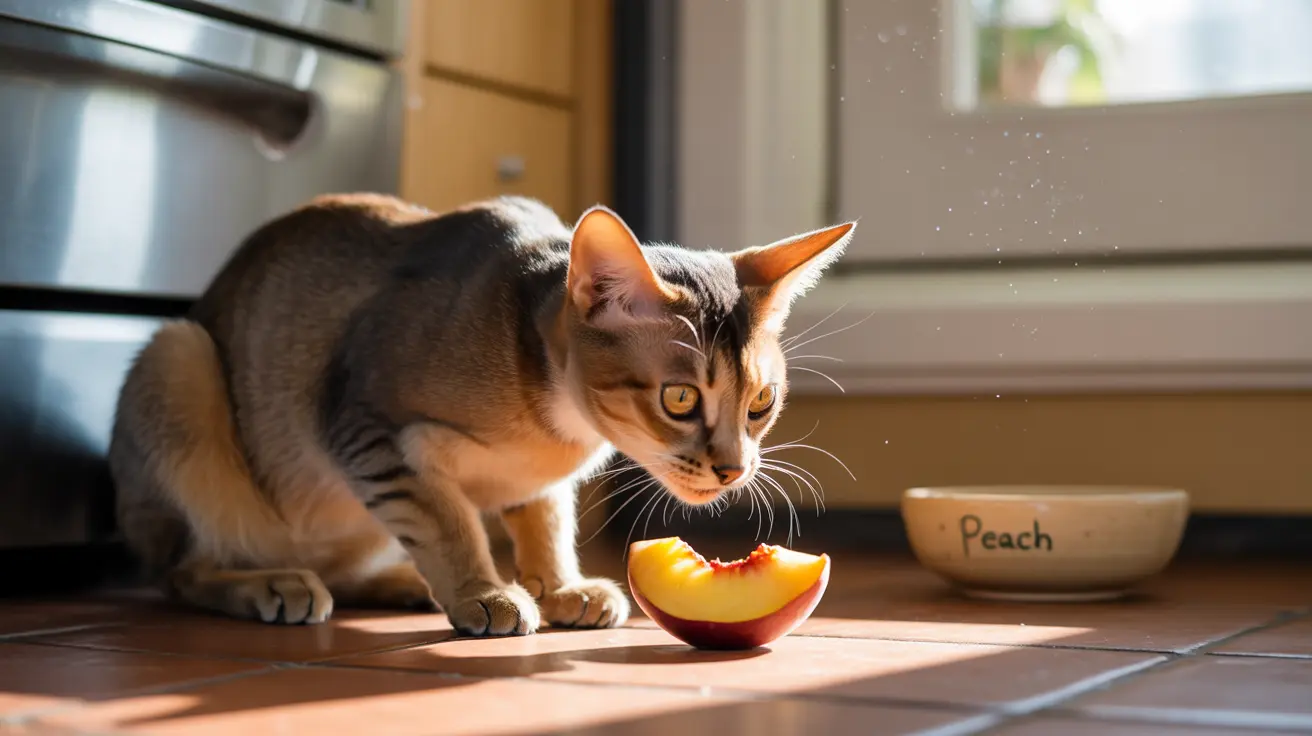Safety First: What Parts of a Peach Are Safe for Cats?
When it comes to peaches, only a small portion is actually safe for feline consumption. The flesh of a ripe, fresh peach - when properly prepared - can be given to cats in very small amounts. However, this should only be offered as an occasional treat, not as a regular part of their diet.
Safe Preparation Guidelines
To safely offer peach to your cat:
- Thoroughly wash the peach to remove pesticides
- Remove all skin and peel
- Completely remove the pit and any stems
- Cut into tiny, manageable pieces
- Offer no more than ¼ of a peach at most
Dangerous Parts: What to Avoid
Several parts of the peach are toxic or dangerous for cats:
Toxic Components
- Peach pits (contain amygdalin, which releases cyanide)
- Stems and leaves
- Peach skin
- Any processed or canned peaches with additives
Why These Parts Are Dangerous
The pit, stems, and leaves contain compounds that can release cyanide when digested, potentially leading to severe poisoning. The skin can harbor pesticides and is difficult for cats to digest, while processed peaches often contain harmful additives and excessive sugar.
Health Risks and Warning Signs
Even when feeding the safe parts of a peach, there are potential risks to consider:
Common Issues
- Digestive upset
- Choking hazards
- Sugar content concerns
- Possible allergic reactions
Warning Signs to Watch For
- Vomiting or diarrhea
- Lethargy
- Loss of appetite
- Difficulty breathing
- Unusual behavior or confusion
Better Alternatives for Cat Treats
Instead of peaches, consider these safer alternatives for treating your cat:
- Small pieces of cooked, plain chicken
- Commercial cat treats
- Small amounts of plain, cooked pumpkin
- Tiny bits of watermelon (seeds removed)
Frequently Asked Questions
Can cats safely eat the flesh of a peach, and how should it be prepared?
Yes, cats can safely eat small amounts of peach flesh, but it must be thoroughly washed, peeled, and pitted. Only offer fresh, ripe peach flesh in tiny pieces, and remove all skin, pit, stems, and leaves.
Which parts of a peach are toxic or dangerous for cats to consume?
The pit, stems, and leaves contain toxic compounds that release cyanide. The skin can harbor pesticides and is difficult to digest. Processed peaches with additives and excessive sugar are also dangerous.
What symptoms indicate peach poisoning or digestive issues in cats?
Watch for vomiting, diarrhea, lethargy, loss of appetite, difficulty breathing, tremors, or confusion. If you notice any of these symptoms after your cat consumes peach, seek immediate veterinary care.
How much peach can I give my cat without risking health problems?
No more than ¼ of a peach should be given at once, and only occasionally as a treat. Many veterinarians recommend even smaller portions, especially when first introducing peach to your cat.
Are there safer fruit alternatives that I can offer my cat as treats?
Yes, safer alternatives include small amounts of watermelon (without seeds), cantaloupe, or cooked pumpkin. However, remember that cats don't require fruits in their diet, and any fruit should only be given as an occasional treat.
The Bottom Line
While cats can technically eat small amounts of properly prepared peach flesh, the risks often outweigh the benefits. Given that cats are obligate carnivores with no biological need for fruit in their diet, it's generally better to stick with species-appropriate treats or consult with your veterinarian about the best treat options for your feline friend.






